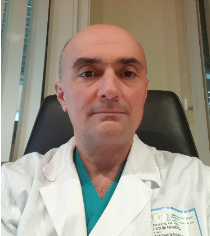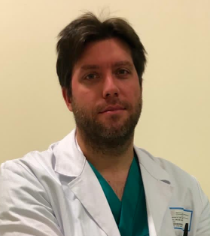 Department of Cardiac Surgery, University Hospital of Parma, Parma, ItalyInterests: Coronary artery disease; Off-pump coronary artery by-pass; minimally invasive CABG procedures; Aortic valve pathologies.Special Issues and Topics in IMR Press journalsSpecial Issue in New Advances in Coronary Artery Bypass Grafting
Department of Cardiac Surgery, University Hospital of Parma, Parma, ItalyInterests: Coronary artery disease; Off-pump coronary artery by-pass; minimally invasive CABG procedures; Aortic valve pathologies.Special Issues and Topics in IMR Press journalsSpecial Issue in New Advances in Coronary Artery Bypass Grafting Department of Cardiac Surgery, University Hospital of Parma, Parma, ItalyInterests: Aortic pathologies; Aortic valve sparing procedures; Coronary artery disease; OPCAB; Minimally invasive CABG procedures.Special Issues and Topics in IMR Press journalsSpecial Issue in New Advances in Coronary Artery Bypass Grafting
Department of Cardiac Surgery, University Hospital of Parma, Parma, ItalyInterests: Aortic pathologies; Aortic valve sparing procedures; Coronary artery disease; OPCAB; Minimally invasive CABG procedures.Special Issues and Topics in IMR Press journalsSpecial Issue in New Advances in Coronary Artery Bypass Grafting
Dear Colleagues,
Aortic stenosis (AS) remains one of the most relevant topics in the field of cardiovascular medicine worldwide. The incidence of degenerative AS in Europe and North-America ranges from 2% to 7%. Stenosis due to bicuspid aortic valve (BAV) is second only to degenerative calcification in terms of its frequency, while occurring almost 10 years earlier. Once AS starts to show symptoms, it strongly impacts the quality of life in affected individuals. The mean survival of symptomatic patients is just 50% at 2-years, and 20% at 5-years.
For decades the only surgical approach available for AS was aortic valve replacement using two different types of prostheses: biological and mechanical. However, technical improvements, huge investments by the biomedical industry, and significant changes in cultural tendency and mentality have shifted the paradigm of aortic valve replacement, especially in Western countries. As a first step towards a more “natural” way of life, transcatheter aortic valve implantation (TAVI) aims to minimize the surgical procedure. Despite the strong investment and broader use of TAVI even for younger patients, some major issues have arisen recently. These include limited coronary access, the durability and successful implantation rate of the wide range of commercially available bioprostheses, patient management after primary implant failure secondary to complications, and degeneration or infection.
Several important questions come to mind in light of these issues. For example, what is the role of the standard surgical approach for aortic valve replacement using either biological or mechanical prostheses? In terms of the surgical approach, does right anterior thoracotomy, upper mini-sternotomy, or full sternotomy influence patient prognosis? Who is actually making this choice? More recently, is there any evidence that other surgical approaches in younger patients, such as the Ross operation, can result in excellent quality of life and durability, even if not yet widely adopted in the adult population?
The aim of this special issue is to shed light on the above questions and to debate topics relating to the treatment of AS. This is one of the most common cardiac disorders globally and one that every specialist involved in the field has come across frequently, both in training and in active practice.
We invite authors to share their surgical experience by submitting their work in the form of original research, review articles, “how to do it”, or surgical techniques. More general articles relating to this topic are also welcome.
Dr. Francesco Nicolini and Dr. Alan Gallingani
Guest Editors
Manuscripts should be submitted via our online editorial system at https://imr.propub.com by registering and logging in to this website. Once you are registered, click here to start your submission. Manuscripts can be submitted now or up until the deadline. All papers will go through peer-review process. Accepted papers will be published in the journal (as soon as accepted) and meanwhile listed together on the special issue website. Research articles, reviews as well as short communications are preferred. For planned papers, a title and short abstract (about 100 words) can be sent to the Editorial Office to announce on this website.
Submitted manuscripts should not have been published previously, nor be under consideration for publication elsewhere (except conference proceedings papers). All manuscripts will be thoroughly refereed through a double-blind peer-review process. Please visit the Instruction for Authors page before submitting a manuscript. The Article Processing Charge (APC) in this open access journal is 2200 USD. Submitted manuscripts should be well formatted in good English.

